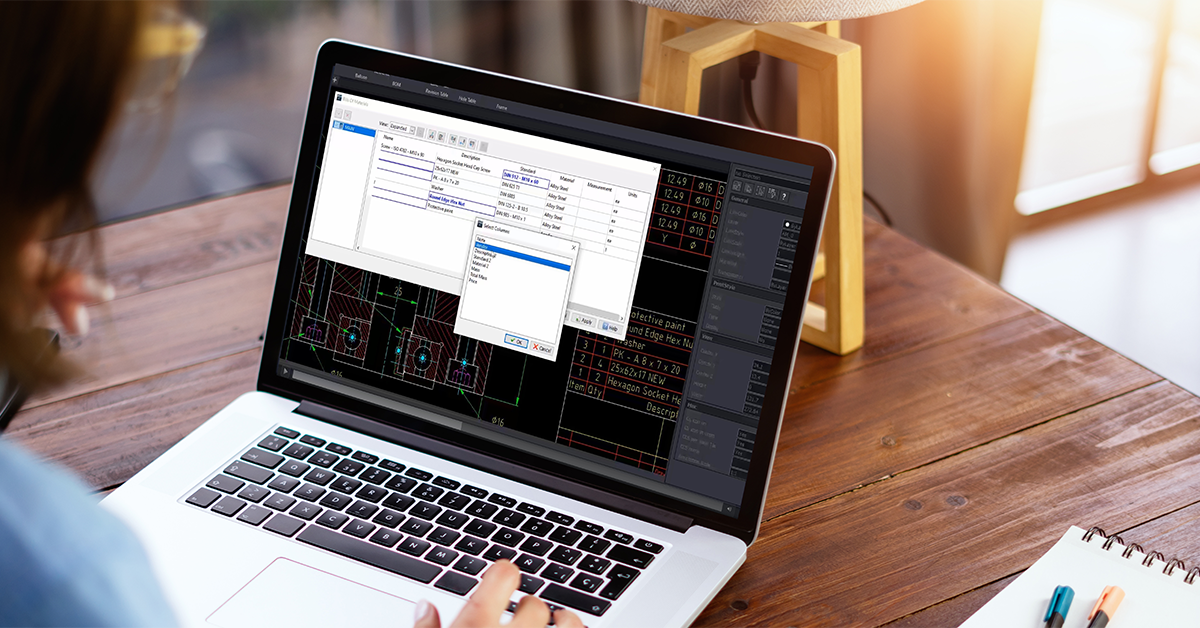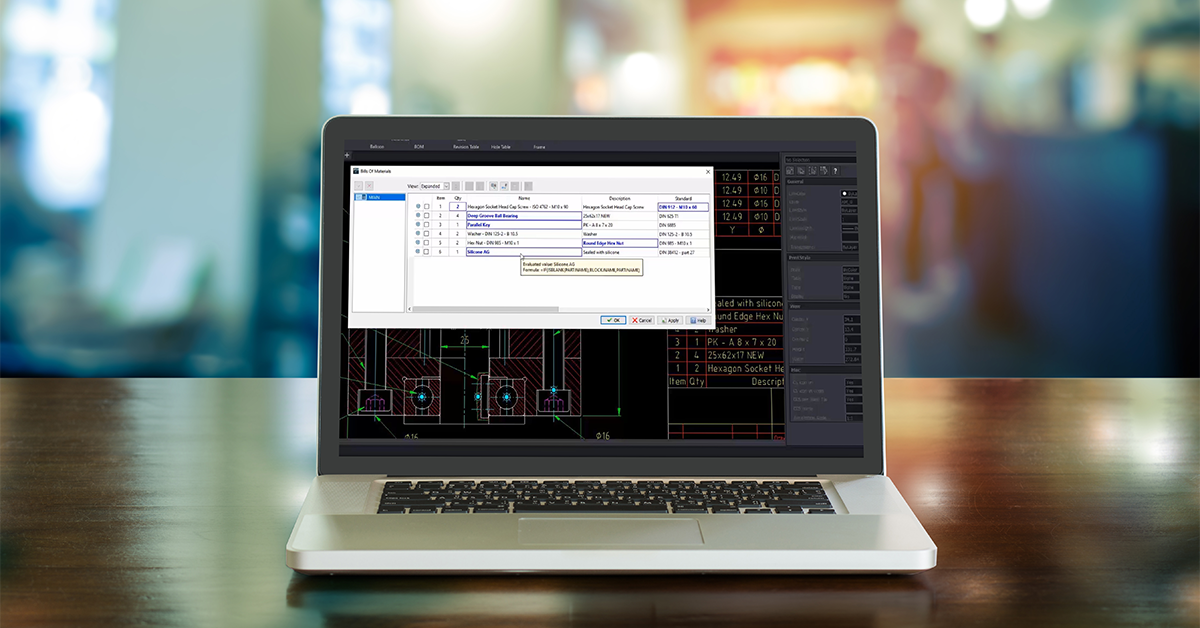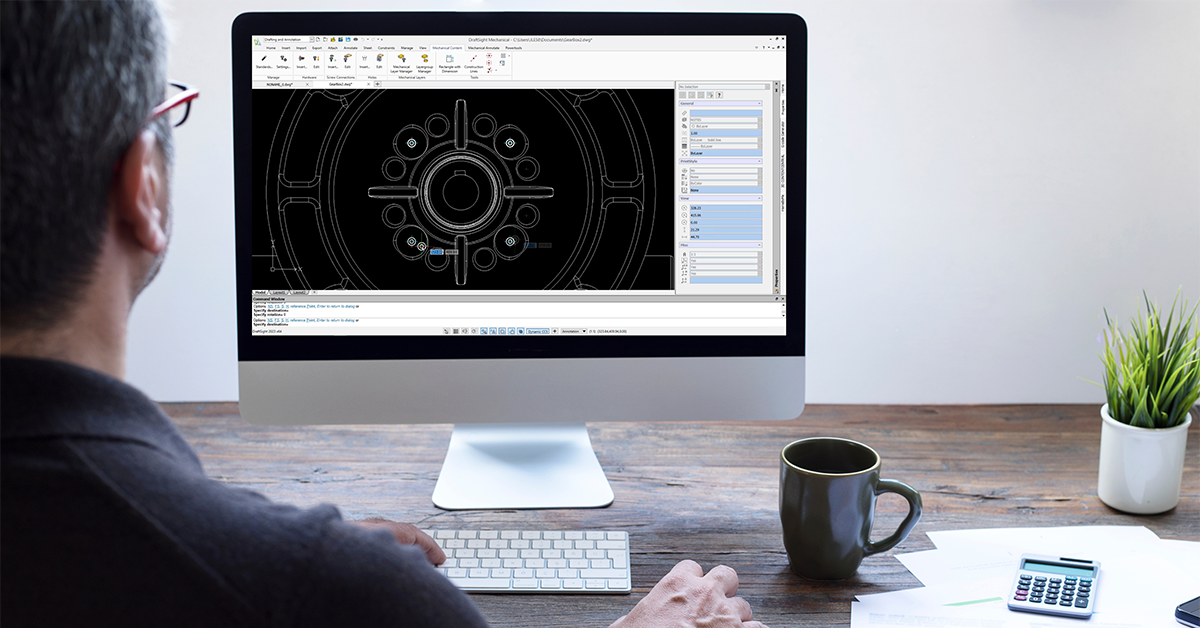Introducing DraftSight Mechanical
From its earliest beginning as a companion to SOLIDWORKS, DraftSight has had the mechanical designer in mind with its built-in Mechanical Toolbox. Those tools and functionality are now even more powerful with the introduction of DraftSight Mechanical, which was purposely built to work with mechanical entities and objects in the DWG file format.
DraftSight Mechanical provides full support for ANSI, ISO, DIN, JIS, and BSI standards, along with being able to work in Imperial or Metric units of measurement or even both by using the dual unit display feature. You also have the ability to customize these standards to your preferred style, including adapting our hardware library to add, modify, or remove parts.
As for the interface, DraftSight’s Mechanical ribbon tab has been subsumed by two new tabs. One is named Mechanical Content, and the other is Mechanical Annotation. Both tabs introduce features that are new to the Mechanical version, along with existing and enhanced tools from the toolbox.
Let’s look at what’s new in DraftSight Mechanical and how these new tools integrate with the existing mechanical tools. We’ll concentrate on three major areas.
First, DraftSight Mechanical needed to be built so that it could recognize and reuse mechanical entities that were created in the DWG format. So, if you have DWG drawings that contain mechanical data, such as hardware, holes, taps, etc., the new DraftSight Mechanical version will recognize the parts and their data, thus integrating them into your software and workflow. There’s even a new Layer Group feature for additional compatibility with previously created mechanical drawings.
Naturally, to accomplish this, we needed to have the second part of the puzzle, which is the addition of part references.
Part References
Part references add intelligence to 2D entities so that they will be treated as a separate part for bill of material (BOM) tracking. You can make or update existing part properties such as number, description, vendor, etc. Save time and work from a robust hardware library. Existing part references can be modified, and new ones are automatically created when using the hardware library, or they can be created from user-defined custom blocks.
BOM and Parts Lists
Next, we’ve introduced full support for a Bill of Materials (BOM) and Parts Lists. The BOM aggregates all part references for the drawing. Create new and update existing BOMs that detail properties of the components, such as part number and quantity. The parts list is a visual table on the drawing that allows you to organize the BOM to your liking to complete your drawing.
Balloons and Frames
Finally, DraftSight Mechanical provides you with Balloons and Frames. Now, you can annotate and add notes to your drawings by creating or reorganizing balloons associated with a parts list. The balloons feature supports part references, so you can use it for content previously created with your legacy mechanical system and with DraftSight Mechanical. Frames allow you to easily fit your designs into title blocks with a simplified scaling process.
If your drawing contains part references that were previously inserted with your legacy DWG mechanical application, you will see these blue dots indicating that mechanical data is attached. This is a key difference from other versions of DraftSight. You will only be able to read and modify this information by using DraftSight Mechanical.
Summing Up
With all this new functionality, it would be easy to forget that DraftSight already has a robust set of mechanical tools. You can still set your standards, maintain your mechanical layers and specify the entities that will map to them. Access your familiar library of bolts, screws, washers, and pins. Create holes, taps, and slots in various configurations, along with adding finish or weld symbols.
Certainly, you’re maximizing these existing tools by combining them with the additional power of DraftSight Mechanical.
If you’re a mechanical design professional, you really do need to check out our new DraftSight Mechanical version. It’s easy to get started; just go here to request a product demo today!






